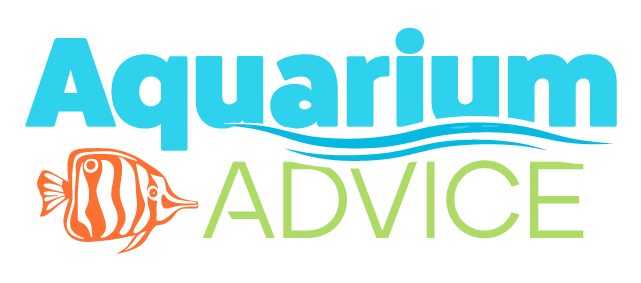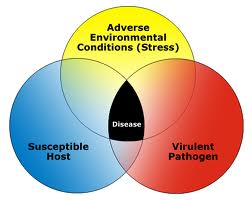There comes a time that every aquarist from beginners to experienced veterans will have a sick fish, this is inevitable so let’s take a look on how to prevent this before it happens shall we? This will be part one of two articles, this one will address prevention and detection and the second article will address identification and treatment.
What Causes Fish Diseases?
Fish diseases are the result of interaction between a pathogen, a fish, and a stressful environment. Even on some occasions the pathogen may be present but a disease outbreak will not occur unless the environment becomes too stressful for the fish.
There are some common triggers in fish such as stress from fluctuating water temperatures, deteriorating water quality, overstocking and incompatibility , poor handling techniques, and improper shipping procedures. Fish can handle these stresses up to a point but when they can no longer adjust, they may succumb to disease and eventually die.
How Can Disease Be Prevented?
Prevention of disease should be the primary goal for any aquarist as prevention is drastically easier than dealing with the actual disease. Ideally, all new arrivals should be quarantined for a minimum of three to four weeks in a pathogen free environment away from the actual display tank. If the fish are bought or shipped you should this will prevent your current tank inhabitants from contracting a pathogen. The fish should be stocked in an environment with a completed nitrogen cycle, correct temperature, highly oxygenated, and minimal organic loading (overfeeding the fish with a low quality food will result in an accumulation of waste, causing poor water quality). Finally, the fish must not be handled too often or too roughly. Keeping the stress encountered by the fish during this process to a minimum will greatly benefit their natural immune system, combine this with clean water this will give them the best chance for survival. If you encounter a illness the clock should be reset prior to adding the fish into the display tank.
Quarantine, Should Be Done Every Time.
Quarantining should be done every time, this will help prevent potentially losing any or all of your display tank stock due to a disease from a new fish (this can be emotionally frustrating and financially expensive). Simply put, every aquarist whether they’re a serious collector or a beginner should quarantine all their new fish. When you decide to purchase fish you also accept the responsibility of giving them the best possible care. Fish dying of infectious diseases is unnecessary … and preventable.
Fish are exposed to a very wide range of diseases along their entire chain of custody from the wild, importer, local breeder, or retailer: ick or ich, velvet, flukes, intestinal parasites such as spironucleus vortens, bacterial infections like Flexibacter columnaris, and so on. No matter how diligent the best wholesalers and retailers are about quarantining and treating their livestock (and honestly most don’t treat for any diseases to save money), chances are their fish will still carry disease. It is expensive and difficult for larger fish operations to rid all diseases from their fish due to the vast number of fish that pass through their systems, so more times than not no treatment is performed and the diseased fish are simply culled.
And once disease enters your aquarium, it can be extremely difficult and potentially expensive to cure and can cost the lives of all your fish so this next step is crucial in my opinion.
A quarantine tank does not need to be extremely large(unless your purchasing large specimens), it doesn’t need substrate, or any fancy decorations either. Below I will outline the items to set up a cheap quarantine tank.
- Quarantine tank: A cheap 10 gallon glass aquarium is sufficient for most small and medium sized fish. For larger fish, consider at least a 29g or my personal favorite a 40g breeder aquarium.
- Heater: Any reliable submersible heater will suffice.
- Thermometer: A cheap mercury-in-glass thermometer will do.
- Filtration: Quarantine systems do not require complicated filtrations. In fact, you do not want to run advanced filtration that may interfere with potential treatments. All you need is a simple sponge filter driven by a cheap air pump. If you have a canister filter or hang-on power filter laying around, feel free to use it (without activated carbon).
- Medications: There are many medications available for treatment. I recommend the medicated flake foods from Angels Plus. These medicated flakes are gentle, effectively combat most diseases, and work very well together. The water soluble medications I use are Clout, PraziPro, Maracyn 2, there are others but I will explain those and my recommendations and their usage later in this article. Now the purpose of these medications is a important step my best practices process for all new arrivals (such as the anti-protozoan flakes) and not treating in response to a disease or a specific illness.
- Decorations: I use a variety of PVC pipes and cheap flower pots. Since you will be treating your tank with medication, these can cleaned and bleached if need be after a disease is found.
- Light: Nothing expensive here unless you prefer that, I tend to limit the light during this process since it helps the fish relax and stress leads towards more issues. The most important function of light in the QT is the ability to clearly see and monitor the physical appearance and examine the fish prior to moving to the display tank.
Typical Warning Signs Of A Problem.
Behavioral Signs:
- Failure to feed properly, spitting food.
- Flashing, which is scraping on décor.
- Buoyancy issues.
- Gathering around the water inflow.
- Reduced vitality.
- Gasping at the surface.
- Reclusiveness.
Physical Signs:
- Blistered areas.
- Swollen or sunken stomach.
- Popped-out eyes.
- Bloody (hemorrhaged) areas on fins.
- Discoloration or erosion of body parts.
- Excessive mucus.
- Growths on the body.
- Stringy white feces.
The Quarantine Process
- Place your sponge filter or media in your main tank so that it cultivates nitrifying bacteria for a minimum of 2 weeks, this will allow to properly seed the sponge or media. Then placing this into the tank with a simple air pump or into a hang on filter will allow for a instant cycle.
- When you’re ready to purchase or recieve new fish, first prepare your tank. Fill the tank with tap water to match the PH of your display tank, then using a quality water conditioner such as Prime to treat the entire tank volume. This water can be partially or fully comprised of water from your main tank if you wish but that’s not required. Move the sponge filter or media from your display tank to your tank. Run the air pump or HOB filter at this time. Install the heater and thermometer; Match the temperature to your main tank. Add the decorations.
- Drip-acclimate your new fish with water from your tank, this should take approximately 45-60 minutes for the majority of freshwater fish.
- Day 1 your new fish to your tank, leaving any lighting off for a period of 24hrs to reduce stress from shipping or transportation. I also don’t recommend feeding during this initial phase as this will allow the digestive track to clear.
- Note if any of the visual or behavior signs are noted upon inspection these need to be addressed immediately.
- Day 2 start to either feed the medicated flakes or a single dose of PraziPro or Clout. PraziPro contains praziquental, where as Clout contains Trichlorfon but both will help with internal parasites and flukes. Follow the manufacturers directions with regards to dosing, Clout can stain silicone and tank décor as a word of warning but it’s a great product. With regards to feeding the anti-protozoa flakes start out with small feedings 1-2 times per then gradually work up to larger amounts over the next 2-3 weeks. I will feed these flakes exclusively for 7 days.
- Day 3 I will perform a 25% water change making sure the new water is the same and temperature as your tank. Then perform a second dose of Clout or PraziPro if your using the medication route.
- Day 5 I will again perform a large 50-70% water change to remove all waste and medications from the water column.
- Day 7 is when I will start the second phase of the process with regards to treating for potential bacterial issues.
- I will discontinue to anti-protozoa flakes and start the anti-bacterial I and II flakes fed exclusively over the next 7 days. If using medications I will use a broad spectrum antibiotic here for the treatment of gram negative or positive bacterial infections.
- Day 10 will simply be a 50% water change.
- Day 15 is all is going well I will transition the fish to the foods they will be fed daily, this should be a high quality easily digestible product.
- Observe your fish daily during this three week period.
- Note if your still seeing any of the visual or behavior signs are noted upon inspection these need to be addressed immediately and the clock is reset for 21-30 days until everything has been cleared up.
- Day 21-30 after you first introduced if the fish appears healthy and is feeding properly congratulations, your fish is now ready for its new home in your display tank.
List of Links to Food and Medications Commonly Used.
http://www.angelsplus.com/FlakeMedicated.htm
http://www.uskoi.com/prazipro.htm
http://www.amazon.com/Sentry-Mardel-Clout-Tabs-100ct/dp/B00025YRJ8
The next articles will be coming soon and will be addressing diagnosis and treatment of the most commonly seen diseases; internal and external parasites, bacterial infections, tumors, and viral outbreaks in the hobby. If anyone has any specific questions feel free to personal message me through Aquarium Advice. Thanks for taking the time to read this!





